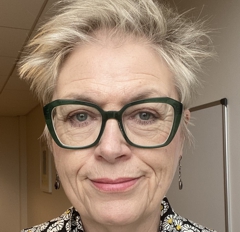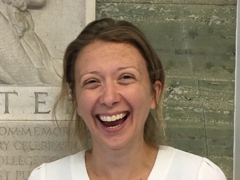Improving chronic wound care across the world
Manchester research is helping transform how venous leg ulcers are treated, offering more effective, patient-friendly and affordable solutions that are being adopted in global healthcare systems.

About venous leg ulcers
- Leg ulcers are chronic sores that take more than two weeks to heal.
- An estimated 1 in 500 people in the UK are affected by venous leg ulcers.
- Venous leg ulcers account for 60% to 80% of all leg ulcers.
- Research has found compression hosiery is more cost-effective than bandages.
- Manchester experts have been researching this area since 1989.
Sources: University press release and NHS leg ulcer information.
Venous leg ulcers are painful, long-lasting wounds that affect tens of thousands of people in the UK alone, mostly older adults. For patients, they can mean months or even years of discomfort, reduced mobility and social isolation. For healthcare systems, they represent a major ongoing cost, requiring intensive nursing support and regular dressing changes.
The standard treatment, multi-layer compression bandages, has been widely used for decades. It works by applying pressure to improve blood flow and support healing, but the bandages are bulky and uncomfortable, and require skilled healthcare professionals to apply them correctly. Patients often find them restrictive and difficult to live with.

Professor Dame Nicky Cullum
Nicky is a Professor of Nursing in the Division of Nursing, Midwifery and Social Work and Director of the NIHR Applied Research Collaboration for Greater Manchester.
In response to these challenges, Manchester researchers including Professor Dame Nicky Cullum and Professor Jo Dumville conducted one of the world's largest clinical trials in wound care. The trial was set up to evaluate whether a simpler alternative two-layer compression hosiery could offer the same healing benefits.
A better approach
The study found that compression hosiery was just as effective at healing ulcers as traditional bandages, while also offering a number of clear advantages.
The hosiery is lighter and easier to wear, and allows many patients to manage their treatment themselves. This reduces dependency on frequent nursing visits, giving patients more independence and improving their day-to-day quality of life. The research also showed that hosiery helped reduce the likelihood of ulcers returning, supporting better long-term outcomes.
From a system-wide perspective, the findings carry significant implications. In the UK alone, adopting this approach was estimated to save the NHS around £7 million in a single year by reducing treatment time, nurse visits and hospital readmissions.
Changing policy and practice
The research has already shaped national and international policy. It has been used to update official NHS guidance in the UK and has been cited in wound care recommendations across Europe and in countries such as New Zealand.

Professor Jo Dumville
Jo is a Professor of Applied Health Research in the Division of Nursing, Midwifery and Social Work. She co-leads the NIHR Manchester Biomedical Research Collaboration Dermatology theme, and the Greater Manchester Rapid Service Evaluation Team.
The evidence base provided by the trial means clinicians can now prescribe compression hosiery with confidence. Its simplicity also makes it more practical in community settings, freeing up valuable time and capacity for healthcare professionals.
"This is the first time there has been a piece of NICE guidance on compression therapy for venous leg ulcers," Professor Cullum says.
"It feels like something of a culmination of all the work Jo Dumville and I have been doing for decades, so we are delighted it has culminated in some national guidance which will help nurses and patients arrive at informed decisions."
Professor Dumville adds: "The contribution of these findings to NICE's late-stage assessment underscores the importance of NIHR studies like VenUS 6 in strengthening the clinical evidence base in wound care, and informing national recommendations that support best practice in patient care."
Global relevance
Venous leg ulcers are a global health challenge, affecting millions of people worldwide - particularly in ageing populations and those with underlying vascular conditions, such as diabetes or obesity.
In low- and middle-income countries, the benefits of compression hosiery are even more pronounced. In areas where access to specialist wound care services is limited, hosiery provides a low-cost, effective solution that doesn't require highly trained staff or complex infrastructure. It enables consistent treatment that can be delivered in clinics and community outreach programmes, or even by patients themselves.
By generating robust evidence for a simpler and more scalable treatment, Manchester's research is helping shape better, more equitable care for chronic wounds across the world, improving outcomes for patients while supporting more sustainable use of global healthcare resources.
More information
- Decades of research informs NICE guidance on leg ulcer treatment (University of Manchester)
- Compression products for treating venous leg ulcers: late-stage assessment (NICE)
- Podcast: Humans of Clinical Academia with Professor Dame Nicky Cullum (YouTube)
- Lockdown Lecture: Professor Dame Nicky Cullum (University of Manchester)
